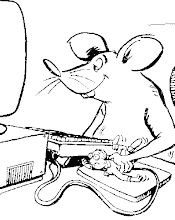
Bollinger Bands are a well known measure of "unusualness". They are based around the calculation of a standard deviation (SD) from the Price data. The more multiples of the SD the Price moves away from the mean, the more unusual it is.
The problem is of course two fold. Should one even attempt to calculate an SD from the data input and do the conditions remain valid for it to be used with any sort of meaning, given that it had any in the first place!?
Fakeouts are the death knoll of any system based on going Short on an initial move above the Upper Band. Likewise going Long on an initial move through the Lower Band. When the market starts to trend, the Bollinger Bands widen and it's not unknown for the Price to move along the Band in question.
Trades can be split into groups based on the Price & Bollinger Band action. Just like with the RSI levels, Group a has the highest probability of success, B less so………
Group A, the Price moves outside the relevant Band and then returns, if it does so again that is just a bonus.
Group B, the Price touches the relevant Band.
Group C, any other, BUT in particular when the Price bounces off the middle 20ma line.
The wider the distance between the Bands the better it is in terms of potential reward - the middle line and the opposite Band are further away.
Expect the trade to stall at around those levels, if not even reverse.
cheers theory

No comments:
Post a Comment